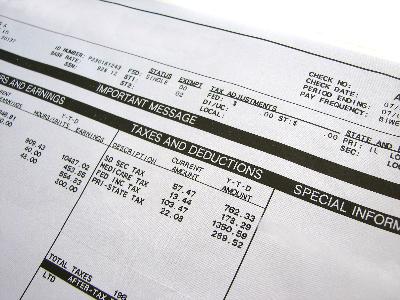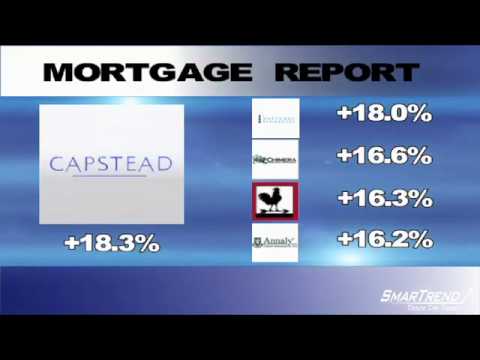- ×
 HỘP ĐỰNG TAI NGHE, CÁP SẠC, USB 1 × ₫39.000
HỘP ĐỰNG TAI NGHE, CÁP SẠC, USB 1 × ₫39.000 - ×
 BỘ 4 KHAY CHIÊN TRỨNG 1 × ₫68.000
BỘ 4 KHAY CHIÊN TRỨNG 1 × ₫68.000 - ×
 VÁY QUẦN CHỐNG NẮNG 1 × ₫45.000
VÁY QUẦN CHỐNG NẮNG 1 × ₫45.000 - ×
 COMBO 10 MÓC DÍNH TƯỜNG CHỊU LỰC 1 × ₫45.000
COMBO 10 MÓC DÍNH TƯỜNG CHỊU LỰC 1 × ₫45.000 - ×
 KỆ NHÀ BẾP ĐA NĂNG 2 TẦNG 1 × ₫245.000
KỆ NHÀ BẾP ĐA NĂNG 2 TẦNG 1 × ₫245.000
Tổng phụ: ₫442.000

Trade receivables is the amount that customers owe to a business when buying a product or service on credit. It is a key line item in the balance sheet and is listed under the current assets section due to its short conversion time into cash. A company’s trade receivables or accounts receivable are an important consideration when it comes to calculating working capital. The solution is aimed at increasing sales and unlocking flexible liquidity in a balance sheet efficient way. The originating company typically extends payment terms offered to its buyers and sells the related receivables to a funder on a true-sale basis. This means you can focus on growing your business rather than chasing payments.

Non-trade receivables are another category of asset that represents money that hasn’t yet been paid to a business but will be soon. Contrary to trade receivables, though, non-trade receivables are the money owed to a business from sources other than the sale of inventory or stock. Sources of non-trade receivables can include dividends, interest payments, and insurance claims. Ideally (at least from the financiers’ perspective), the seller’s customers would make payments with respect to any sold receivables directly into accounts held by the SPV.
In addition, you should ensure that you send an invoice as soon as you complete the work you’ve been contracted for. The longer you wait, the longer payment is likely to be delayed, meaning that trade receivables stay stuck on your balance sheet. GoCardless makes it easier and faster for your customers to pay you by giving you the option to collect recurring payments via ACH Debit. Most importantly, they play a significant role in ensuring that your business has a healthy cash flow. With a culture of late payments now prevalent across many industries across the US, small businesses are often the ones to suffer.
This saves time and reduces the need for manual bookkeeping, allowing businesses to focus more time and resources on running their operations. It also helps businesses to remain compliant with taxation regulations, reducing the need for costly accounting fees. Working capital is the amount of money used to cover short-term expenses and obligations.
Companies can also receive early payment if their customers give them access to early payment programs such as supply chain finance or dynamic discounting. These are initiated by the buyer rather than the seller and tend to provide funding at a lower interest rate than methods such as factoring. The following chart demonstrates the credit sales, collections, discounts, allowances, and sales returns for the first month. Adam Hayes, Ph.D., CFA, is a financial writer with 15+ years Wall Street experience as a derivatives trader.
Once the customer has paid the bill, the company will credit the trade receivables account by $475 and debit the cash account. Companies considering TRS are often first-time issuers.To ensure success, TRS programmes need to be adequately structured, and, more importantly, the right servicing engine needs to be engaged in processing the programme. Considerable know-how and resources are required to facilitate the ongoing reporting necessary for funders. Since trade receivables are typically short duration assets with rapidly changing performance, the timely reporting of these assets to funders is critical to a successful program. When a company owes debts to its suppliers or other parties, these are accounts payable. To illustrate, imagine Company A cleans Company B’s carpets and sends a bill for the services.
Trade receivable financing allows businesses to raise funds against the invoices that customers owe them. Trade receivables are all invoices for goods or services that have been delivered to customers or clients but haven’t yet been paid for. They’re likely to be the largest asset on most businesses’ balance sheets, as they represent all the outstanding money owed to your business but is due soon. Accounts payable is the opposite of accounts receivable or trade receivables. Accounts payable refers to the amount of money a business owes to its suppliers for goods or services delivered. In any buyer-supplier transaction, both accounts receivable and accounts payable are created.
Chaser Payment Portals allow your customers to make payments via credit card, debit card, PayPal, Stripe and BACS. So, regardless of where your customers are based, Chaser has a payment solution that will work for them. Try to agree with your customers on shorter terms where possible but at the same time don’t ignore longer ones either because they may still add value in certain circumstances. For example, a common term is for 30 days after receipt of invoice but this could be 90 days depending on different factors such as volume of business, industry sector etc. As soon as you’ve completed your side of a contract, you should send an invoice to the client. This not only acts as a good reminder for your customer but also ensures that they don’t forget about it and make payment before realising they need to.
The ladder is of concern to a company’s management because if the business has a higher ratio of receivables to cash, then that may demonstrate that the company is not effective in collecting on what it’s owed. If the receivable amount is too low, then perhaps the payments terms are too strict and not enough product is getting sold. “Trade receivables” refers to the total amounts owed to your company for the products or services sold to customers, but for which you have not yet received payments. How reliably business owners can predict these payments depend on the strength of their credit approval systems and the state of the economy or industry. Offering credit terms to customers for products and services is a staple of business operations. While it is more common in the B2B industry, some B2C businesses also rely on a credit model.
Hong Kong Securities And Futures Commission Fines Changjiang ….
Posted: Mon, 21 Aug 2023 16:52:34 GMT [source]
While the payment term depends on the industry of business, it is best to decide on short payment terms as that will ensure that cash flows in sooner. Firstly, businesses should be clear on payment terms and make them known to their customers. This could include setting out the payment terms clearly on the invoice and providing customers with a timeline of when payment should be made. Yes, it is an asset because the trade receivables’ amount is expected to be fully paid off within one year. We found that the trade receivables for Company XYZ is $185,000, and they have annual revenue of $750,000.
Chaser makes it easy for customers to pay by providing a link to one of our Payment Portals in every reminder email to make payment quickly and easily. This will show your customer that you’re serious about getting paid and hopefully avoid any late payment penalties. Payment terms are something you’ll want to have agreed with your customer before you start working. Make sure you clearly understand what the payment terms are and if possible try to agree with them on how long they’ll have from when your services or products have been delivered. While you can certainly run an all-cash business, it will be difficult to increase your customer base and your sales numbers if you don’t extend credit to customers. Unfortunately, even with careful planning, some of those accounts will end up delinquent no matter how careful you are.
The term trade receivables refers to any receivable generated by selling a product or providing a service to a customer. It is an asset category that also What are trade receivables comprises money owed to a business that hasn’t been paid yet. However, it includes money from other sources rather than the sale of products or services.
Trade receivables are likely to be one of the largest assets on your company’s books, aside from inventory. It’s important to remember that trade receivables are also known as accounts receivable, so you may see these terms used interchangeably with one another. The effectiveness of a company’s credit and collection practices is calculated by the trade receivables turnover ratio.
While in some cases this is achieved by novation of the accounts or notification of the debtors, it is more often the case that the debtors may continue to pay into the collection accounts of the seller. In this case financiers will usually require that the seller’s collection accounts are swept frequently to limit any losses which may occur on the insolvency of the seller. Security or trusts together with control agreements will also be required to ensure the SPV can control the collection accounts on the seller’s insolvency. A receivable is created any time money is owed to a firm for services rendered or products provided that have not yet been paid. This can be from a sale to a customer on store credit, or a subscription or installment payment that is due after goods or services have been received. Most companies operate by allowing a portion of their sales to be on credit.

Sometimes, businesses offer this credit to frequent or special customers that receive periodic invoices. The practice allows customers to avoid the hassle of physically making payments as each transaction occurs. In other cases, businesses routinely offer all of their clients the ability to pay after receiving the service. There is n number of credit purchases or sales that take place as a part of business operations. Therefore, all such amounts receivable and payable on account of credit sales and purchases are referred to as trade receivables and trade payables. Trade receivables are the money owed by one company to another for products and services that have been sold.

This can result in a higher DSO for suppliers, which may not receive payment for 60 or 90 days in some cases. One of the most compelling reasons to establish a TRS program is to diversify funding sources via accessing the capital markets. This is especially true for companies that have weaker creditworthiness than their buyers and/or companies with long sales cycles and terms of sale.